Boston Light
Two lighthouses — two towers — protect Boston Harbor: Graves Light marks northern approaches to the harbor, and Boston Light marks southern approaches.
Two lights with different appearance and different history, but equally beautiful, each in its own right.
On these neither days of winter, as I peek out behind snowbanks, I wanted to write about Boston Light, to remember longer days and warmer nights.
First, however, let’s look at the two towers together. It is not easy to find a spot in the harbor where both fit in the frame and their sizes are comparable, but in November I finally found a hill in Hull that just fits the bill. Boston Light is in foreground; it is about 2.8 miles between the lighthouses.
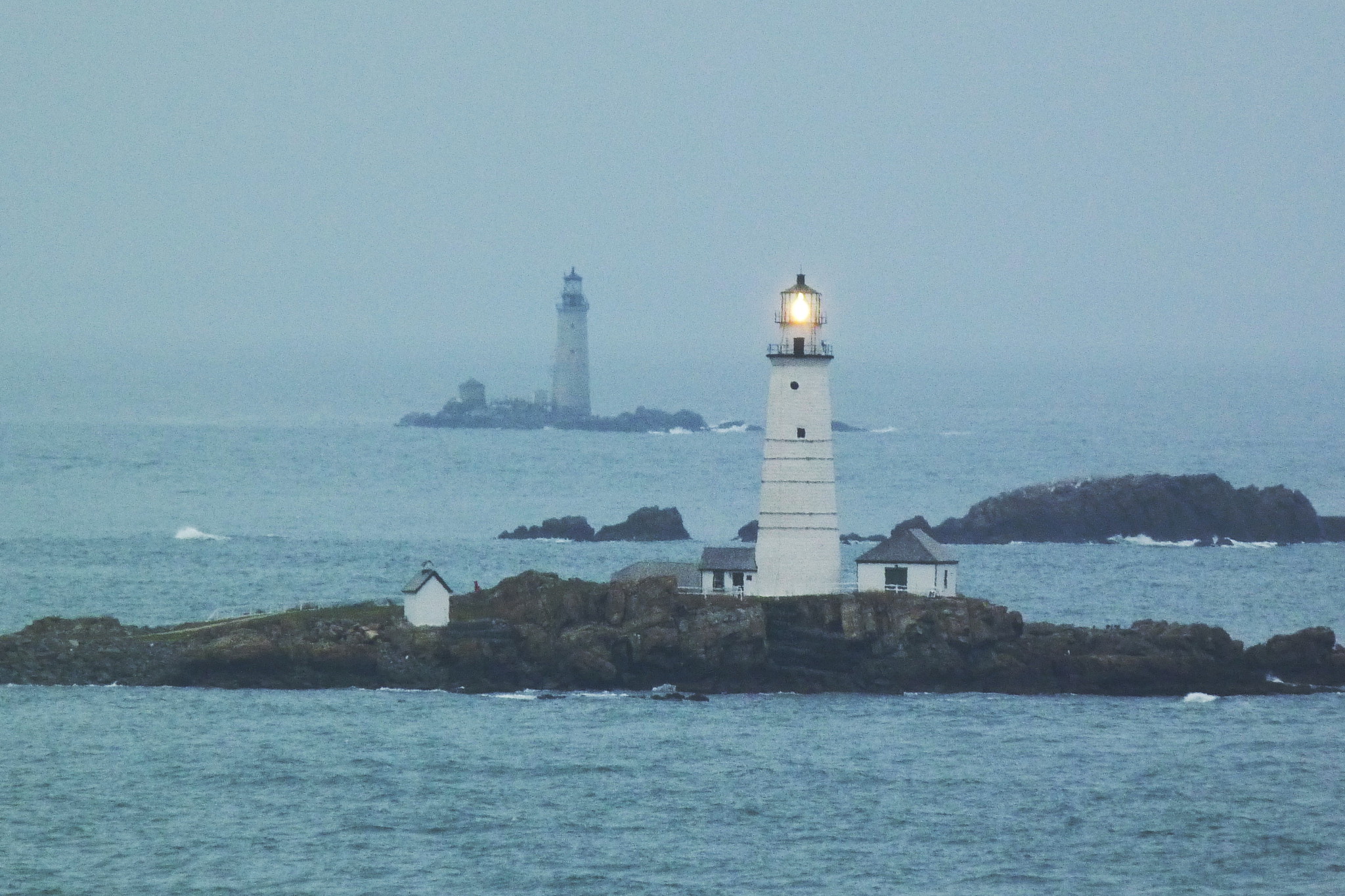
Now, on to Boston Light! You might have seen its iconic image in books and on postcards.
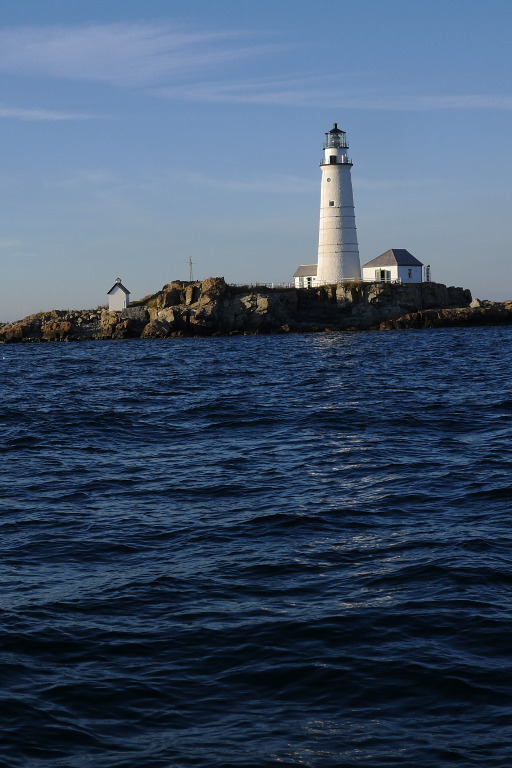
Boston Light was the first lighthouse built on the territory of the modern United States: in 1716.
In addition, Boston Light holds another record. It is the last lighthouse in the US that still has a keeper: Sally Snowman, the 70th Boston Light keeper (and the first woman).
US Coast Guard (the agency responsible for lighthouses) considers lighthouse birthday to be the day when it was first lighted. Boston Light was first lighted on September 14, 1716.
When I was first researching Boston Light for a blog post, back in 2015, I found this photo in Coast Guard Facebook feed: the lighthouse keeper Sally Snowman wishes the light happy 299th birthday.
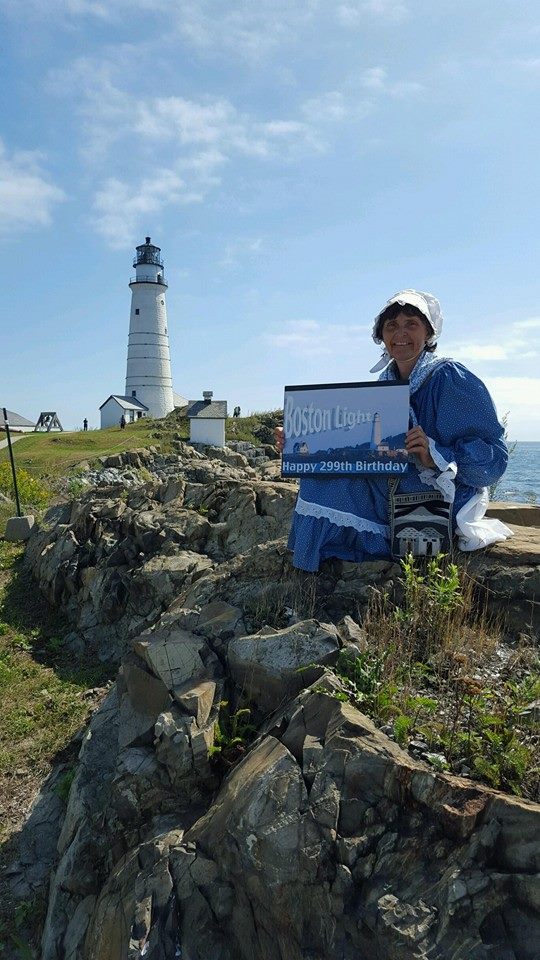
As I saw that photo, an idea immediately came to my mind. Wouldn’t it be neat to sail to Boston Light on its 300th birthday, heave-to by it, open some champagne, drink to its health? After all, three hundred years is a quite respectable age. As remarked somebody in Coast Guard, Not many things in our country last for three hundred years.
And so, it was planed for September 14, 2016 to sail out to Boston Light and and to offer it out best anniversary wishes. Unfortunately, the weather forecast turned bad, and so we moved our voyage up one day. The lighthouse gout our best wishes a few hours before the birthday. I am sure it did not hold any bad feelings.
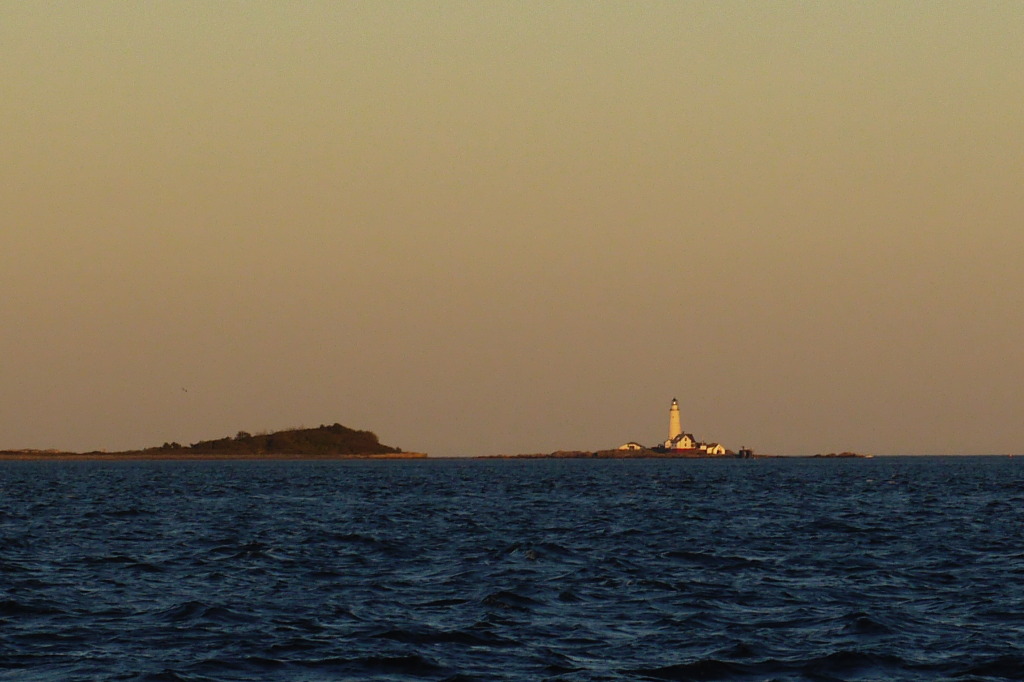
In the story of the nearby Georges Island we mentioned the prominent Boston merchant and selectman John George, after whom, apparently the island was named. Representing the business community of the city, George petitioned Massachusetts authorities in 1713 for
Erecting of a Light Hous & Lanthorn on some Head Land at the Entrance to the Harbour of Boston for the Direction of Ships & Vessels in the Night Time bound into the said Harbour.
Having decided to get themselves a lighthouse in the beginning of the eighteenth century, the good people of Boston were quite forward-looking. At that time, there were just seventy lighthouses in the entire world. And, say, New York City got its first lighthouse fifty years after Boston. In 1719 Boston Light got another first — first fog signal in the US. It was a cannon, which the keeper would fire when visibility was poor. You can actually see the cannon at the right edge of this drawing.
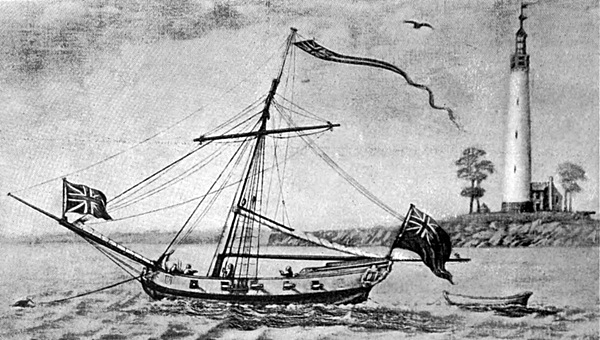
When the British evacuated from Boston in 1776, they blew up Boston Light as their parting gift to the former subjects. The new tower, which stands there till this day, was built in 1783 — it makes it the second oldest active lighthouse building in the US. Since 1783, Boston Light was turned off only once: during World War 2, to prevent German planes and submarines from finding Boston.
In 1989, a new calamity befell to Boston Light. All other lighthouses were already automated by that time, Boston Light was the last remaining. The Coast Guard came over to evict the last lighthouse keeper: he was not needed anymore, and no longer included in the budget. This is how it was symbolically to happen: the first lighthouse keeper in the US started to live there; the last one being thrown out of the same place.
At that point the fair people of Boston rebelled. The Bostonian regard their city as a profoundly historic place, and loudly protest against anything that they consider to be an attack on their historical heritage.
The Coast Guard just shrugged them away: We would like to accommodate your silly wishes and leave you a lighthouse keeper, dear people of Boston, but there is no money in budget. Have a nice day.
Fortunately, a powerful defender came to Boston Light’s help: US senator from Massachusetts Ted Kennedy. Thanks to his efforts, a bill passed the same year (1989) requiring the Coast Guard to operate Boston Light “on a permanently manned basis” with funding attached.
This is how Boston Light remained the last lighthouse in the US (and, if I am not mistaken, in North America) which is still attended by a keeper.
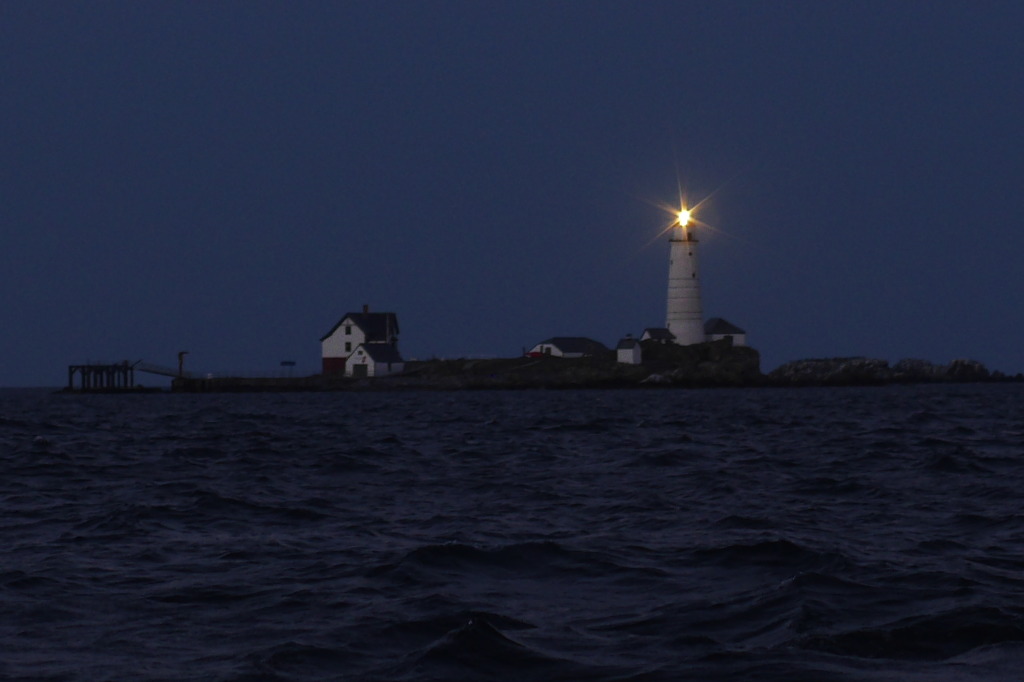
Recalling all that history, we sailed on a fresh south-westerly breeze, reached the lighthouse in no time, hove-to next to it, clinked the glasses, wished well to the old man.
Happy birthday, Boston Light! We love you! Thank you for being there.
Stay with us for three hundred years more. Though why just three hundred? Stay with us, as the law says, permanently!
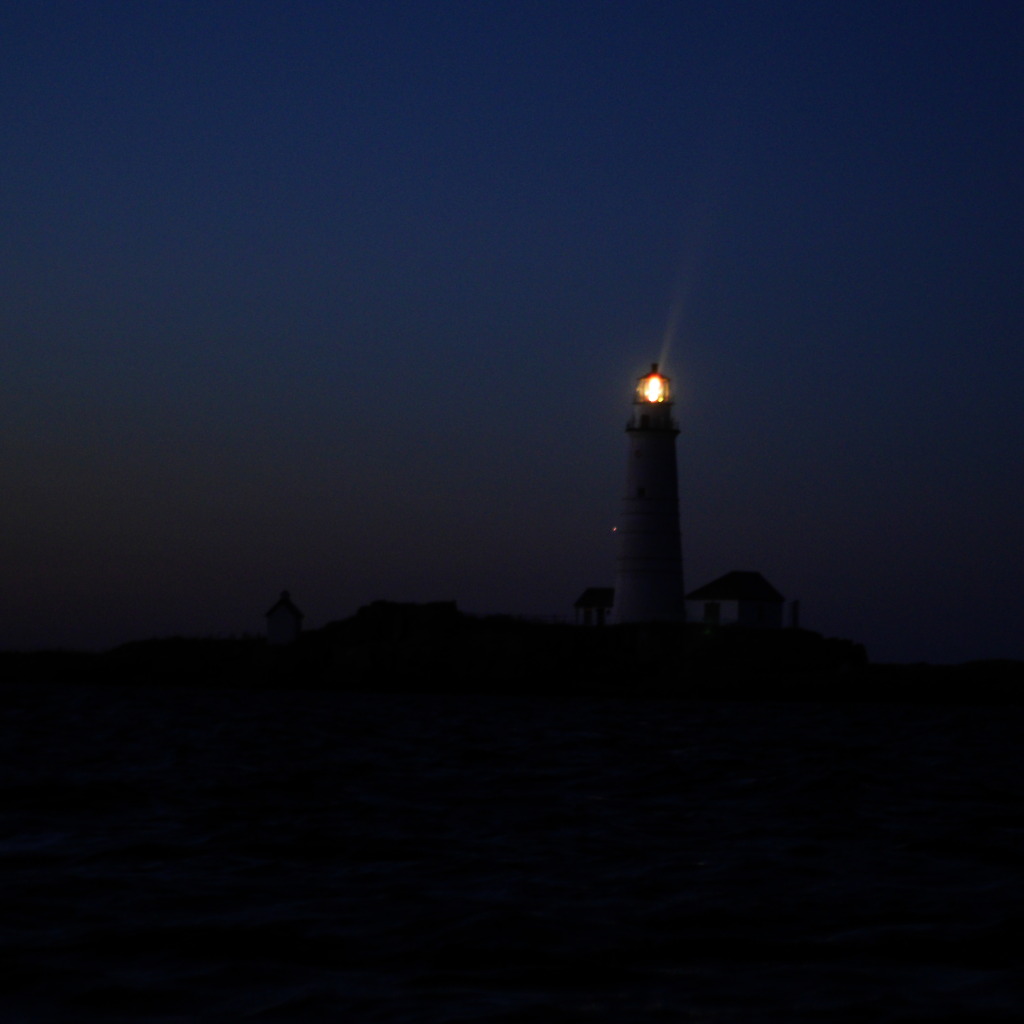
Last but not least I have to list the navigational features of the lighthouse: light height of 102 feet (31 m) above the sea level; nominal visibility range of 27 nautical miles (50 km); flashing white every 10 seconds. (Nominal visibility is based purely on light intensity, and does not take the earth curvature into consideration. Actual visibility depends additionally on the height of the light and the observer, and also on the weather conditions.)
Boston Light is the only lighthouse that I know that is always on. Even in daytime, there is something profoundly reassuring to see its bright light flashing when it appears in view from behind another island. Don’t worry, it seems to be saying. Everything is under control. I got you covered. I’ve been here for three hundred years. You are in good hands.
Excellent antidepressant, that light.
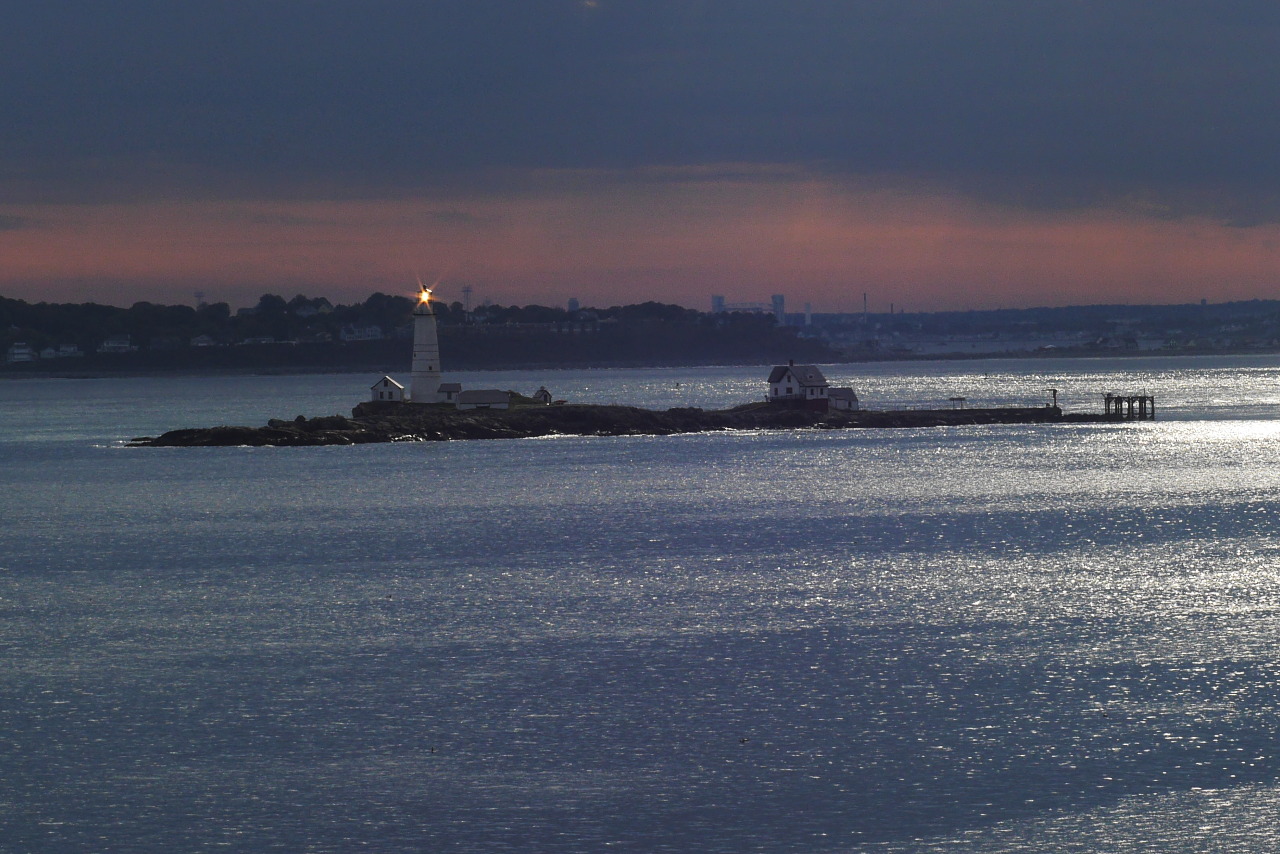
Subscribe via RSS